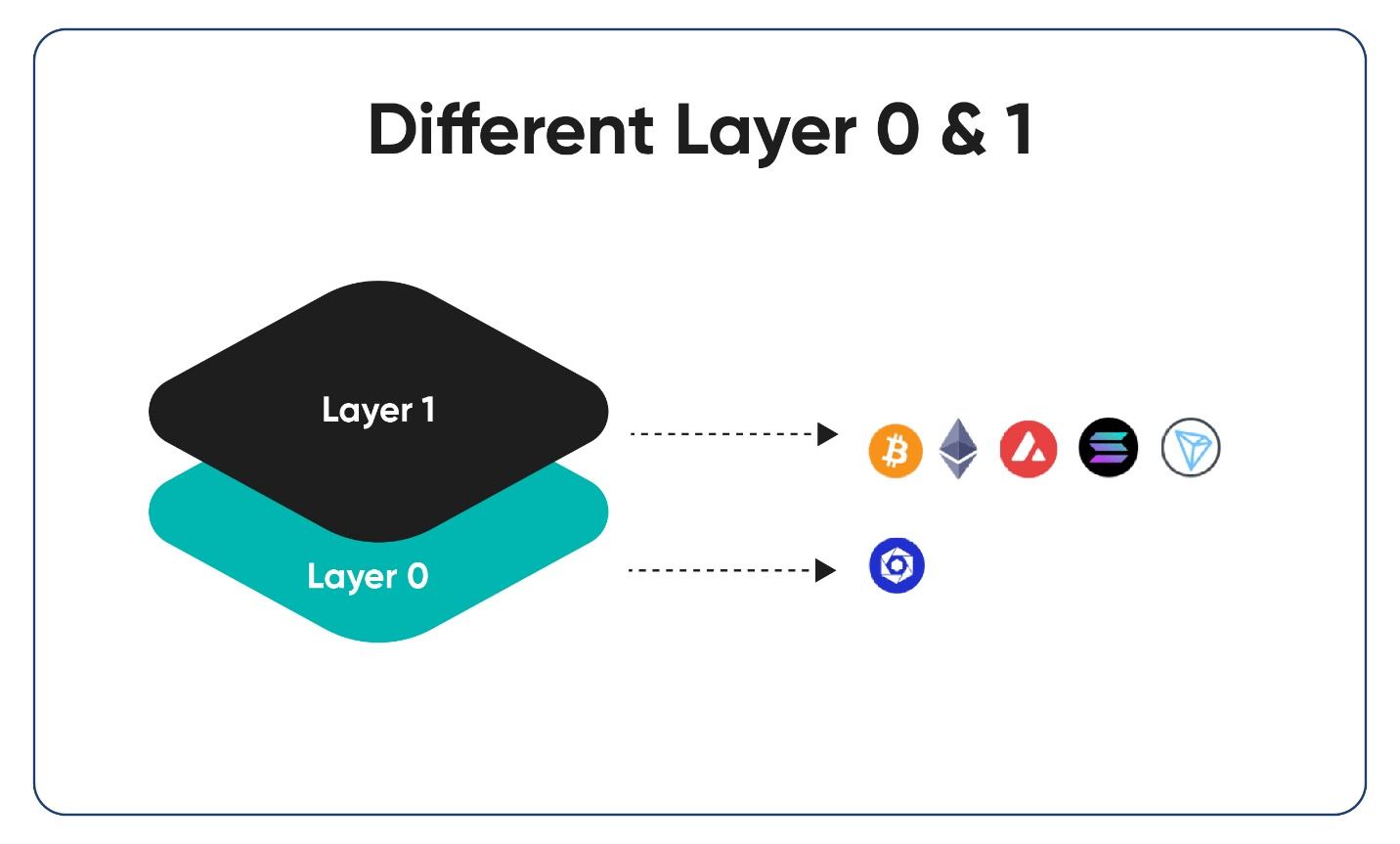The history of blockchain technology is intricately tied to the evolution of Layer 1 protocols. These base layer networks act as the foundation for the entire cryptocurrency ecosystem, providing the infrastructure for secure and transparent transactions. In this blog, we’ll embark on a journey tracing the evolution of Layer 1, from the groundbreaking innovation of Bitcoin to the sophisticated protocols shaping the blockchain landscape today.
The Genesis: Bitcoin and the Birth of Layer 1
In 2009, a revolutionary white paper titled “Bitcoin: A Peer-to-Peer Electronic Cash System” by Satoshi Nakamoto introduced the world to the first viable Layer 1 protocol – Bitcoin. This groundbreaking invention established a decentralized digital currency free from central control. Bitcoin’s core innovation was the blockchain, a distributed ledger technology that securely records transactions across a network of computers (nodes). Every node holds a copy of the ledger, ensuring transparency and immutability. Bitcoin secured its network through a consensus mechanism called Proof-of-Work (PoW), where miners compete to solve cryptographic puzzles to validate transactions and earn rewards in Bitcoin.
While revolutionary, Bitcoin’s Layer 1 had limitations. The PoW mechanism, while secure, is computationally expensive, leading to slow transaction processing times and high energy consumption. Additionally, Bitcoin lacked the ability to execute complex programs, restricting its functionality primarily to a digital currency.
Ethereum and the Rise of Smart Contracts
Recognizing Bitcoin’s limitations, Vitalik Buterin envisioned a more versatile Layer 1. In 2015, Ethereum emerged, introducing the concept of smart contracts – self-executing code stored on the blockchain. This innovation transformed Layer 1 capabilities, enabling the development of decentralized applications (dApps) across various sectors, from finance (DeFi) to supply chain management. Ethereum’s Layer 1 relied on a modified version of PoW but faced similar scalability challenges as Bitcoin.

Innovation Beyond PoW: The Search for Scalability
The limitations of PoW fueled the exploration of alternative consensus mechanisms. Proof-of-Stake (PoS) emerged as a promising solution. In PoS, validators with a stake in the network are randomly chosen to validate transactions, eliminating the computational burden of PoW and significantly reducing energy consumption.
Several Layer 1 protocols adopted PoS variations. Cardano, launched in 2017, utilizes a unique Ouroboros PoS mechanism, known for its energy efficiency and security. Solana, launched in 2020, boasts a novel Proof-of-History (PoH) protocol alongside PoS, achieving high transaction throughput and scalability.
Beyond Consensus: Addressing Scalability Through Sharding
While alternative consensus mechanisms addressed energy consumption, the core issue of transaction processing speed remained. Layer 1 protocols like Ethereum explored sharding, a technique that partitions the blockchain into smaller segments (shards). Each shard processes transactions independently, significantly increasing the overall network capacity.
The Future of Layer 1: Interoperability and Sustainability
As Layer 1 protocols evolve, interoperability – the ability to seamlessly interact with other blockchains – becomes increasingly crucial. Several projects, like Cosmos and Polkadot, are dedicated to building bridges between different Layer 1 networks, fostering a more interconnected blockchain ecosystem.
Sustainability is another major focus. Blockchains with energy-efficient consensus mechanisms like PoS are gaining traction. Additionally, Layer 1 protocols are exploring ways to reduce their carbon footprint through renewable energy sources and optimized network protocols.

The Road Ahead: A Continuous Evolution
The evolution of Layer 1 blockchain protocols is a constant process driven by innovation and the need to address real-world challenges. From the pioneering spirit of Bitcoin to the sophisticated smart contract functionality of Ethereum, and the ongoing exploration of scalability solutions and interoperability, Layer 1 continues to lay the groundwork for a decentralized future.
Looking Forward
The future of Layer 1 is bright. As developers continue to push boundaries, we can expect even more advancements in areas like:
Scalability: Novel consensus mechanisms and sharding techniques will further enhance transaction processing speed and network capacity.
Security: Layer 1 protocols will strive to maintain the highest level of security against potential attacks and vulnerabilities.
Governance: Decentralized governance models will allow for more community-driven decision-making and protocol upgrades.
Privacy: Layer 1 solutions will integrate privacy features to address user concerns about data confidentiality.
(Link to PB2: Deep Dive into Blockchain Layer 1 Protocols: Understanding the Foundation)

The Intersection of Layer 1 and Digital Asset Management
As the digital asset landscape matures, the role of Layer 1 protocols becomes even more intertwined with digital asset management. Here’s how:
Enhancing ROI with Digital Asset Consulting: Understanding the nuances of different Layer 1 protocols is crucial for informed investment decisions. Digital asset specialists can provide insights into the technical specifications, security features, and potential of various Layer 1 networks, empowering investors to optimize their returns.
Stablecoin Investment Consultant: Stablecoins, cryptocurrencies pegged to a stable asset like fiat currency, offer a degree of price stability within the volatile crypto market. Understanding which Layer 1 protocols support robust stablecoins is essential for risk-averse investors. Digital asset consultants can offer guidance on this front.
Digital Asset Management Services: Layer 1 protocols provide the infrastructure for secure and transparent digital asset management. Investment firms specializing in digital assets leverage this infrastructure to offer portfolio management services tailored to cryptocurrencies, NFTs, and other digital assets.
Long-Term Investment in Digital Assets: While some investors seek short-term gains in the crypto market, others are interested in long-term growth. Layer 1 protocols with strong fundamentals and a focus on scalability are better suited for long-term investment strategies. Digital asset specialists can help investors identify Layer 1 protocols with a long-term outlook.
The Future of Digital Asset Management
The future of digital asset management is intricately linked to the continued evolution of Layer 1 protocols. Here are some key trends to watch:
Security in Digital Asset Management: Security remains a paramount concern in the digital asset space. Layer 1 protocols with robust security features will be increasingly attractive for digital asset management companies.
Transparent Investment Solutions: Layer 1 protocols, by their very nature, promote transparency. Digital asset management firms that leverage Layer 1 solutions can offer investors greater transparency into their investment strategies and holdings.
DeFi Finance Consulting Services: Decentralized Finance (DeFi) leverages blockchain technology, particularly Layer 1 protocols, to offer innovative financial services. Consulting firms specializing in DeFi can guide investors and businesses in navigating this rapidly evolving space.
Conclusion
The evolution of Layer 1 protocols is a testament to the ongoing innovation within the blockchain ecosystem. As these base layer networks become more sophisticated and scalable, they will continue to unlock the full potential of digital assets and reshape the future of finance, investing, and beyond. Work with Kenson Investments to stay updated about Layer 1 protocols and more through our blockchain and digital asset consulting services. Our bitcoin investment consultants and digital asset management consultant team provide expert guidance, ensuring you benefit from the best digital asset investment solutions available.














